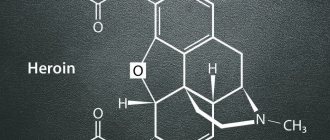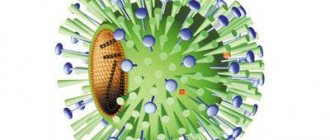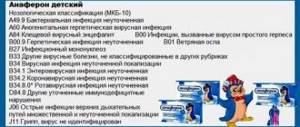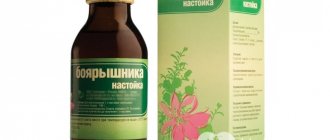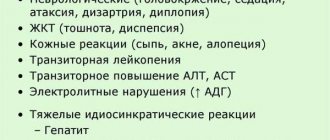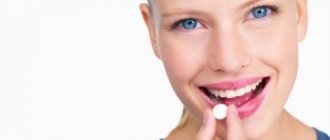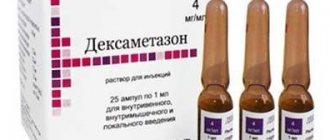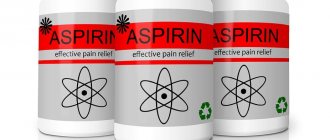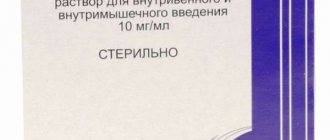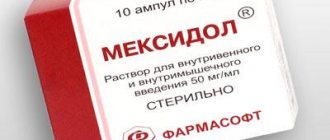Antibiotics are medicines with an antibacterial effect, which comes in two types: bactericidal (destroys bacteria) and bacteriostatic (inhibits the growth of bacteria). The discovery of antibiotics was a milestone in human history. Every year, antibacterial drugs save the lives of millions of people around the world. However, like any powerful drug, they have side effects, and if they are abused, an overdose cannot be ruled out.
Source: depositphotos.com
How much does it take to overdose?
Antibiotics are drugs with antibacterial effects. They are divided into two groups – those that suppress the growth of bacteria and those that destroy harmful microorganisms. Such medications help cope with many serious diseases. However, they have contraindications and can cause side effects. If there is no control during the treatment period, an overdose may develop.
Any antibiotic is prescribed by a specialist, the dosage is calculated individually for each patient. The dosage regimen depends on many factors, so there is no single dosage of medications. Poisoning can develop in any person. There are few reasons for this phenomenon, but overdoses often occur.
Causes:
- Incorrectly calculated dosage. In the absence of accurate data on the patient’s weight, antibiotics are prescribed at random, which can cause poisoning, especially in children.
- Self-administration of medications for any cold symptoms
- Storage in accessible places often leads to antibiotic intoxication in children.
An overdose of antibiotics adversely affects the condition of the body and disrupts the functionality of many internal organs.
Preventive measures
To reduce the risk of drug poisoning, the following rules must be followed:
- pay attention to the expiration date of medications;
- It is recommended to take the tablets separately;
- strictly follow the recommendations of your doctor and do not adjust the dosage yourself;
- carefully read the instructions for use;
- consult a therapist about the compatibility of medications;
- keep the first aid kit out of the reach of children;
- do not store liquid dosage forms in the freezer;
- At the first sign of an antibiotic overdose, consult a doctor.
If they are prescribed according to strict indications by a doctor, taken according to instructions and in compliance with all rules, they are quite effective and relatively safe when used in children of any age. However, if parents leave unattended a bottle of suspension that a child can drink, or self-medicate, using antibiotics without medical supervision and following dosing and administration rules, this risks side effects, complications and poisoning.
Antibiotics in pediatric practice for outpatient treatment are used in the form of powders, suspensions or syrups. All of them have a pleasant taste and aroma, so that children are more willing to take them during treatment. However, bright bottles and the pleasant taste of the medicine given by parents can attract children. If the bottle is left unattended, there is a risk of poisoning from these medications. This is the most common situation that arises in relation to poisoning.
There may be other options - self-medication for children, according to the regimens previously prescribed by the doctor, or according to Internet data. An error in calculating the dose or using a medication that is not indicated in a given situation leads to a risk of poisoning. Taking antibiotics for viral infections is dangerous (they do not act on viruses and are not indicated in such a situation), long-term use of not one, but several drugs at once - this increases the risk of poisoning.
Poisoning may occur if parents dilute the syrup (suspension) incorrectly or give medications undiluted without reading the instructions. Such situations also arise quite often.
If children take an excessively large dose of the drug, this threatens not only general toxic reactions, but also damage to certain organs and systems. This is especially dangerous with nephrotoxic or ototoxic antibiotics. Taking large doses or taking too long a course, or incorrect concentration of the drug, threaten children with damage to the auditory nerves and deafness, acute renal failure and irreversible damage to the kidney tissue. Both acute poisoning (simultaneous use of a high dose) and chronic poisoning (taking long-term increased or even normal doses of the drug) are dangerous.
Also, poisoning with drugs from the group of antibiotics will cause general symptoms in children. This is nausea with vomiting and joint pain, severe headaches, increased heart rate against the background of a sharp decrease in blood pressure. There may be severe lethargy with depression, confusion with delirium and convulsions. Most drugs undergo transformation in the liver, therefore, often one of the manifestations will be the development of toxic hepatitis. Children with it have icteric skin with severe itching, as well as pain in the right side, in the projection of the liver.
Signs and symptoms of overdose
All antibacterial drugs are divided into several groups depending on what substance is active in their composition. Overdose in adults has different symptoms. However, there are a number of common symptoms that are characteristic of all poisonings.
Symptoms:
- Elevated temperature, sometimes to very high levels,
- Painful sensations in the head, joints, muscles,
- Constant nausea, intense vomiting,
- Severe intestinal upset
- Sudden changes in pressure,
- Frequent heartbeat
- Increased sweating
- Impaired consciousness.
Depending on what medicine the poisoning occurred, characteristic signs are noted.
Groups and symptoms:
- In case of an overdose of penicillins and cephalosporins, the patient experiences nausea, vomiting, and intestinal upset. The level of potassium in the body increases, mental disorders occur. Epileptic seizures may develop.
- Poisoning with tetracycline antibiotics occurs infrequently, and such medications are rarely used in children. Intoxication is characterized by nausea and low potassium levels. A small rash appears on the skin, stomatitis and pain in the abdomen are often diagnosed.
- Excessive consumption of chloramphenicol leads to serious disruptions in the functioning of the body and poses a particular danger to humans. The drug is often used for food poisoning, but it itself can provoke intoxication. In case of an overdose, nausea and vomiting occur, appetite is disrupted, and disruptions in the functioning of the respiratory system occur. Poisoning with such an antibiotic disrupts the process of hematopoiesis. In the absence of help, death occurs as a result of impaired breathing.
- Fluoroquinolones are quite effective antibiotics, but improper use leads to serious changes in the body. In case of an overdose, malfunctions occur in the functioning of the cardiac system, kidneys, joints, and liver.
- Poisoning with drugs of the aminoglycoside group can lead to the development of pathological processes in the functionality of the kidneys and hearing aid. However, such intoxications occur quite rarely.
Antibiotic poisoning is dangerous to the body and therefore requires immediate first aid.
If you take an antibiotic too often, it will stop working.
Is it true. Bacteria adapt to drugs, and this is very dangerous. For example, about 250 thousand people die every year from antibiotic-resistant tuberculosis. At the same time, you should not refuse to take antibiotics if there are indications for this. If you have a bacterial infection, your GP will prescribe antibiotics no matter how many times you have taken them in the past year.
pixabay.com | Photo: Pixabay.com
First aid and antidote
If signs of overdose appear, you should call a doctor. During the waiting period, various measures are taken to remove the toxic substance from the body.
Measures:
- If more than three hours have not passed since the use of antibiotics, then the victim undergoes gastric lavage.
- The patient is given various sorbents to drink and cleansing enemas are used.
- To slow down the absorption of antibiotics, it is allowed to give the victim jelly, a solution of starch with water, jelly - products with viscous properties.
- In the presence of allergic manifestations, antihistamines may be taken.
These actions at home are carried out provided that the victim is conscious. There is no antidote for antibiotic poisoning.
What should parents do if they suspect poisoning?
It will be very helpful for doctors and parents to establish the exact fact of poisoning, when it is known how much, what drug and when the child drank. However, this does not happen often, and in life, parents often find empty bottles of antibiotics, but cannot know for sure whether the child took them, and if so, how much and for how long ago. This makes it difficult to assess the degree of danger, and parents often begin to panic. It is important to pull yourself together and try to help the child as quickly and competently as possible. The situation will need to be analyzed later, after first aid has been provided.
Naturally, the first and mandatory action is to call an ambulance, and immediately after that, provide assistance to the child even before the specialists arrive. First of all, you need to clear the stomach of any remaining medication in order to reduce its absorption into the blood. To do this, children need to give a lot of warm water to drink, and then apply pressure with their fingers in the area of the root of the tongue. This provokes vomiting. You need to do this two or three times until all the contents of the stomach are released.
It is important for parents to remember that this can only be done if the children are conscious. If consciousness is clouded or absent, place the child on a flat surface with his head turned to the side. If there is vomiting, in this position the child will not aspirate (inhale) the vomit.
If you have washed the stomach, after that you need to give the child any of the sorbents that you have at home - this is activated carbon, crushed into powder and diluted with water, or smecta, polysorb, etc. If there are no sorbents, you need to skip this step, moving on to subsequent actions.
Calm the child, pull yourself together and wait for doctors who will help provide first aid and decide whether hospitalization is necessary. You definitely need to show them the packaging and tell them how much medicine was in it.
When is medical help needed?
In case of overdose of antibacterial drugs, contacting a doctor is mandatory. These drugs tend to be poorly excreted from the body, so independent treatment is not possible. In a medical institution, various actions are taken to help cleanse the body of antibiotic residues and normalize the functionality of systems and organs.
Actions:
- Gastric lavage using a tube,
- The use of forced diuresis - accelerates the elimination of toxins by increasing the amount of urine,
- Carrying out hemosorption - blood purification procedures using special equipment,
- The use of hemodialysis is the removal of toxins from the blood using an artificial kidney,
- If necessary, the peritoneum is washed with a special solution through a catheter.
In the future, vitamin therapy and proper nutrition are selected.
Recovery from an overdose of antibacterial drugs takes different times depending on the person's immune system and the number of tablets swallowed.
Further treatment
Intoxication from antibiotics requires treatment in a hospital setting. After determining an accurate diagnosis, the doctor can prescribe effective therapy suitable for each case.
When the condition of an adult patient normalizes, temporary fasting is required on the first day. When an appetite appears, the patient should eat light food, since the gastrointestinal tract is not yet able to function normally.
Anti-toxin therapy:
- Use of diuretics.
- Intravenous administration of saline solution.
- Hemodialysis.
- In severe cases, a blood transfusion is prescribed.
Symptoms are eliminated with drugs:
- hepatoprotectors;
- glycosides;
- antispasmodics;
- drugs that improve blood circulation.
Effective antibiotics for poisoning
| Name | pros | Minuses |
| "Furazolidone" | Has an antimicrobial effect; does not penetrate into the blood. | Nausea, vomiting. |
| "Ersefuril" | Blocks the development of pathogenic organisms; intestinal antiseptic; the drug is effective against diarrhea. | Sometimes a rash, swelling, and anaphylactic shock appear. |
| "Fthalazol" | Antimicrobial medicine; fast-acting effect. | Cannot be used with other antibiotics; hypersensitivity to sulfonamide drugs. |
| "Cefix" | For children in the form of a suspension; quickly absorbed into the gastrointestinal tract; its 50% elimination time is 3-4 hours; removes all types of bacteria; for acute intestinal symptoms; no side effects; course of treatment up to 9 days. | Nausea, vomiting, diarrhea, dry mouth. |
| "Enterofuril" | For children with diarrhea of unknown origin; has wide application; in the form of a suspension is taken depending on the age of the child. | Urticaria rarely occurs. |
At home, after consulting a doctor and reducing the exacerbation, antitoxic folk recipes are used
| Name | Recipe |
| Liquorice root | Pour 2 tbsp. l. means 0.5 liters of boiling water. Boil and cook for up to 10 minutes. Leave for 60 minutes. Strain, drink 0.5 cups 3 times a day. |
| Horsetail | Make an infusion. The ratio of grass to water is 1:20. Drink 0.5 glasses 3-4 times a day. |
| knotweed | Pour 0.5 boiling water into a thermos, first add 2 tablespoons of herbs. Leave for 120 minutes. Strain, drink 0.5 cups 2-3 times a day. |
| Blueberries | Squeeze juice from 2-3 glasses of berries. Use little by little throughout the day. |
| Coal | Take 1 tablet of charcoal on an empty stomach for 7-12 days. |
| Water | Drink 200 ml of warm boiled water on an empty stomach. |
For the final removal of antibiotics, folk remedies will help:
- On an empty stomach, eat 1 clove of garlic, drink 200 ml of water with 0.5 tsp. linseed oil. The method will allow you to recover from antibiotics.
- Crush 1 clove of garlic, pour in 0.5 cups of sunflower oil. Leave for 72 hours. Take 0.5 tsp on an empty stomach. The method will quickly restore the microflora.
- Add 2 cloves of garlic to 200 ml of kefir and drink in one gulp. Eat the leftovers. Take 2 hours before going to bed. Kefir normalizes microflora.
- Eat 7-10 sprouted wheat seeds 4 times a day. The product restores intestinal microflora and improves immunity.
It is necessary to eat sour fruits and berries. They will help relieve the toxicity of drugs and restore the functioning of the gastrointestinal tract.
The use of probiotics “Hilak Forte”, “Linex”, “Bifidumbacterin” will help cleanse the body of toxins. The best effect will be provided by taking medications with medications.
Antibiotic overdose: consequences
An overdose of such medications leads to the development of adverse consequences for the victim. Intestinal microflora is often disrupted. This phenomenon leads to the development of dysbiosis, a weakened immune system, and frequent intestinal infections.
Often, an overdose has an adverse effect on hearing functions. Poisoning poses a danger to children due to the body's low resistance. Exacerbations of chronic diseases are possible in the future. In severe forms of overdose, acute renal and liver failure develops.
An overdose of antibiotics can be fatal in the absence of help and quality treatment. If signs of poisoning are detected, the victim must be given first aid and shown to doctors.
Indications
Antibacterial drugs are indicated in the following cases:
- Inflammatory diseases of the digestive system with the proliferation of opportunistic and pathogenic microflora (dysentery, cholera, typhoid fever);
- Infectious lesions of the respiratory system (pneumonia), severe acute respiratory viral infections with the addition of bacteria, the appearance of purulent exudate (lung abscess, purulent tonsillitis);
- Infectious complications and primary inflammatory diseases of the cardiovascular system (infective endocarditis, myocarditis);
- Systemic inflammatory response syndrome (sepsis);
- Pathologies of the genitourinary system, sexually transmitted diseases, kidney inflammation (gonorrhea, syphilis, cystitis);
- Diseases of the central and peripheral nervous system (neuritis, encephalitis, myelitis);
- Damage to the organs of hearing, vision (otitis media, conjunctivitis);
- An inflammatory reaction involving microorganisms that appears in the area of bones and joints (osteomyelitis, arthritis).
It is worth clarifying that antibiotics act exclusively on pathogens of cellular diseases, that is, pathogenic fungi and bacteria. The use of this group of drugs for the reproduction of viruses exclusively is ineffective and pointless.
Video: School of Dr. Komarovsky - antibiotics
Read further:
List of the best antibiotics for food and alcohol poisoning
How to take antibiotics for intestinal infections?
Levomycetin for poisoning, vomiting, diarrhea
Can jelly be used in case of poisoning for adults and children?
Signs of kidney cancer
Article rating:
( 1 ratings, average: 5.00 out of 5)
Share with friends:
You may also be interested in:
Tramadol overdose - symptoms, antidote
Poisoning with warfarin - symptoms and treatment
Consequences of afobazole overdose ✅ - symptoms and treatment
Overdose of diphenhydramine - the effect of diphenhydramine on the body
